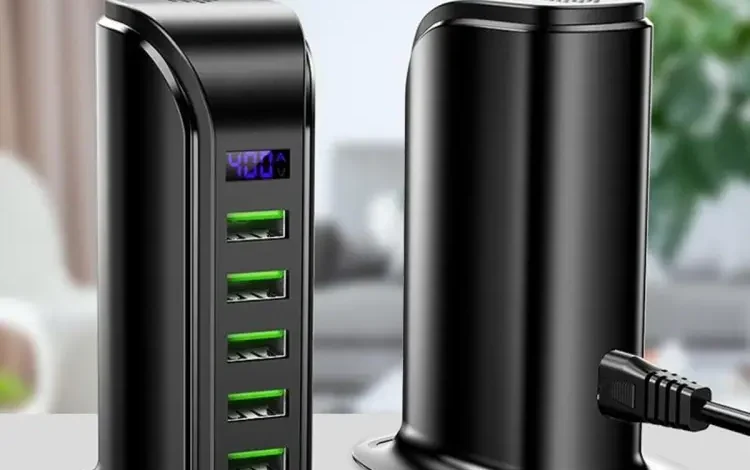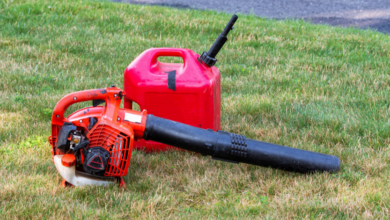What is a USB Charging Port?

A USB charging port is a special place on our computers, tablets or phones where we can plug in a cable to charge the device. Imagine it like a tiny doorway where electricity can come in to power up our gadgets. These ports are usually small and rectangular and you might find them on many electronic devices around your home or school.
Using a USB charging port is easy! You just need a USB cable which has a plug on one end that fits into the port. When you connect the cable to your device and plug the other end into a charger or computer the battery starts to fill up with power. This way you can keep your devices running even when they run out of energy.
Why Do We Need USB Charging Ports?
We need USB charging ports because our electronic devices like phones, tablets and laptops need power to work. Just like how we need food to have energy, our devices need electricity. A USB charging port allows us to easily connect our devices to a power source and recharge them whenever they are running low on battery.
Without USB charging ports we wouldn’t be able to use our devices for a long time. Imagine if your tablet stopped working in the middle of your favorite game or your computer shut down while you were watching a fun video. That’s why USB charging ports are so important they keep our gadgets powered up and ready to use!
What is a USB Charging Port Used For at Home?
At home a USB charging port is used for many things. You can use it to charge your phone so you can call and text your friends and family. You can also use it to charge your tablet or laptop so you can play games, watch videos or do your homework.
Having USB charging ports at home is very handy. It means you can keep all your devices charged up and ready to use whenever you need them. Whether you are relaxing on the couch or doing a school project USB charging ports help make sure your devices are always powered up.
How Do We Use a USB Charging Port?
Using a USB charging port is simple and fun. First find the USB cable that came with your device. One end of the cable will fit into the USB port on your device and the other end will fit into a charger or a computer’s USB port. Plug the cable into your device and then into the power source and watch as your device starts to charge!
It’s important to plug in the cable gently so you don’t damage the port or the cable. Once it’s connected you can leave your device to charge. Some devices even show a little lightning bolt or battery icon to let you know they are charging. When the battery is full you can unplug the cable and enjoy using your fully charged device.
What Devices Use USB Charging Ports?
Many devices use USB charging ports. Your smartphone which you use to call and play games has a USB port. Tablets which are great for watching videos and drawing also use USB ports to charge. Even your laptop which you might use for school projects has a USB charging port.
Other devices that use USB ports include digital cameras, portable speakers and even some toys. These ports make it easy to charge all kinds of gadgets so you can use them whenever you want. With so many devices using USB ports it’s no wonder they are so important in our daily lives.
What is a USB Charging Port Used For in School?
In school USB charging ports are very helpful. You can use them to charge your tablets and laptops which are often used for learning and doing homework. With charged devices you can read ebooks, watch educational videos and do interactive lessons.
USB charging ports in the classroom also help teachers. They can use their charged laptops to show presentations and videos to the class. When everyone’s devices are charged, learning becomes more fun and interactive. USB ports make sure that all the tech in the classroom is ready to go.
How Do USB Charging Ports Help Us?
USB charging ports help us by keeping our devices powered up and ready to use. They make it easy to charge our phones, tablets and other gadgets so we can always stay connected and entertained. Whether we’re at home school or traveling, having a charged device is always important.
These ports also help us share information and stay productive. For example a charged laptop or tablet allows us to do homework, create projects and learn new things. USB charging ports make sure that our devices have enough power to do all these important tasks every day.
Different Types of USB Charging Ports
There are different types of USB charging ports. The most common one is USB Type-A which is the rectangular port you see on many computers and chargers. There’s also USB Type-B which is often found on printers and some other devices. These ports are less common but still important.
Another type is USB Type-C which is newer and very versatile. It’s smaller and can be plugged in either way which makes it very easy to use. Many new phones, tablets and laptops use USB Type-C because it can charge devices faster and transfer data quickly. Knowing about these different types helps you understand which cables you need for your devices.
Keeping USB Charging Ports Clean and Safe
Keeping USB charging ports clean and safe is important. Sometimes dust and dirt can get inside the ports which might cause problems when charging. You can use a small clean brush to gently clean the inside of the port to make sure it works well.
It’s also important to be gentle when plugging in and unplugging cables. If you use too much force you might damage the port or the cable. Always make sure the cable is the right way around before plugging it in. By taking care of your USB ports you can make sure they last a long time and keep your devices charged and ready to use.
Conclusion
USB charging ports are very important in our daily lives. They help keep our devices charged so we can use them whenever we need to. Whether at home, in school or on the go USB charging ports make sure our phones, tablets and laptops are always ready.
By understanding what USB charging ports are used for and how to take care of them we can make the most of our electronic devices. These little ports play a big role in keeping us connected, entertained and productive every day.




